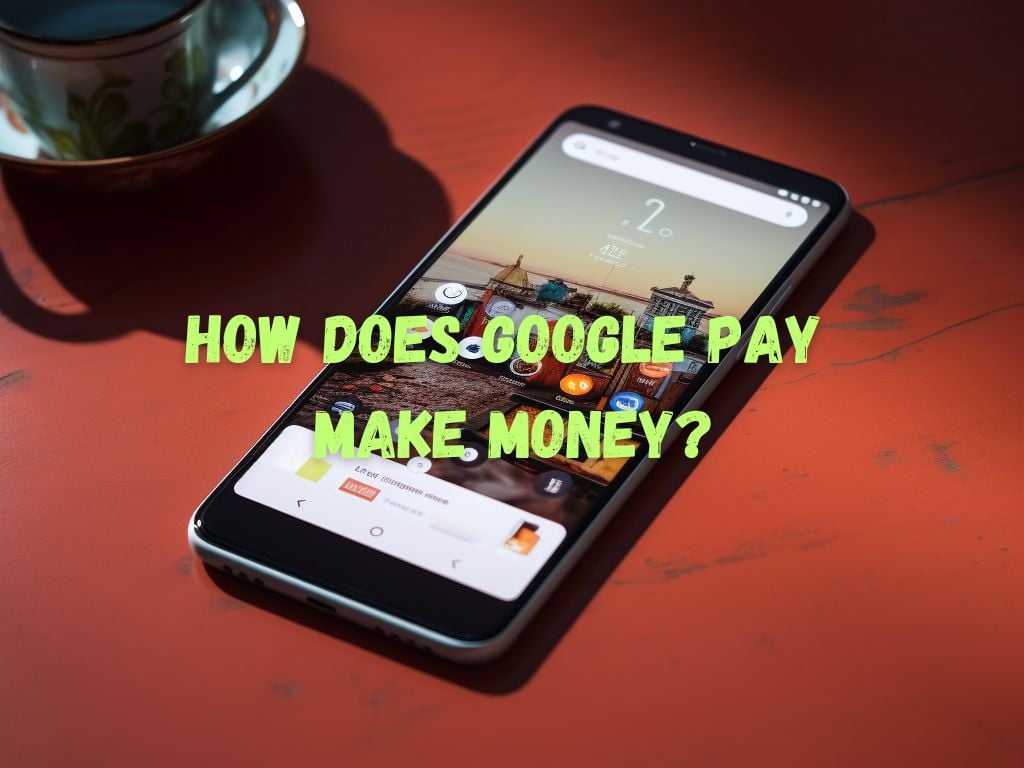Google Pay is a mobile payment platform that enables users to make financial transactions via their smartphones.
With each passing day the app seems to be gaining more popularity, and it has continued to grow its user base thanks to the convenience and reliability it provides.
But how does Google Pay make money to manage to stay afloat financially? In this article, we will explore the business model of Google Pay and investigate how they generate revenues.
How Does Google Pay Work?
Google Pay is a payment app that allows its users to make transactions both online and offline.
One of the main selling points is that users can easily link their bank accounts and other financial services like credit and debit cards to the platform, thus eliminating the need to carry cash.
When a user initiates a payment through the app, Google Pay acts as an intermediary, connecting the user’s bank account or card with the merchant’s payment gateway.
The transaction is then processed securely, and the user is notified once the payment is successful.
How Does Google Pay Make Money? (Explained!)
Google Pay generates its revenue from several sources. These include:
Commissions from Transactions
When someone uses Google Pay to make a payment, the app earns a small commission from the merchant’s payment gateway. These commissions are usually a percentage of the total amount of the transaction.
For example, if a user buys $100 worth of groceries from a store and makes the payment via Google Pay, the platform may earn a 2% commission from the payment gateway. This means that Google Pay earns $2 for facilitating the transaction.

Bill Payments
Google Pay provides users with the convenience of making various bill payments, such as electricity, water, and gas bills. To enable this, Google Pay has partnered with several service providers and billers.
When a user initiates a bill payment through the app, the payment is processed securely, and Google Pay earns a commission from the service provider or biller.
Merchant Fees:
Google Pay charges a small fee for each transaction processed on its payment gateway. The fees are transparent and competitive for businesses, supporting small to medium-sized enterprises to maximize profits.
Google Pay prioritizes security and compliance with advanced encryptions and authentication protocols, providing businesses with a safe and seamless payment experience.
Mobile Recharge Commission:
Google Pay allows users to recharge their mobile phones directly through the app and earn cashback rewards. Google Pay earns a commission from the mobile service provider for each recharge made through the platform.
The incentive program promotes user engagement and increases platform usage. Google Pay partners with various mobile service providers to offer a wide range of options for users to choose from.
The process is simple, fast, and secure, providing a convenient option for users to recharge their mobile phones anytime and anywhere.
In-App Advertising
Although Google Pay does not advertise goods and services within its platform, there is potential to do so in the future.
By using data collected from user transactions, Google Pay can show personalized ads to users, similar to how Google’s search engine and other platforms function.
Strategic Partnerships
Google Pay has partnered with several businesses and financial institutions, providing additional revenue streams. For instance, they have teamed up with Visa to enable users to link their Visa cards, and with HDFC Bank to provide reward programs and discount offers.
The Success Factors of Google Pay
The success of Google Pay can be attributed to several factors, including:
User Base and Market Expansion
Google Pay has managed to expand its user base rapidly, thanks to its convenience and reliability. With over 67 million monthly active users in India alone, Google Pay has become one of the most popular payment apps in the country.
Furthermore, Google Pay has been expanding into new markets, such as the United States and the United Kingdom. This enables the platform to reach more potential users and increase its revenue streams.
User Engagement and Retention Strategies
Google Pay has implemented various strategies to keep its users engaged and encourage repeat usage.
Users can earn cashback, rewards, and discounts when using the service, which creates an incentive to continue using the app for transactions.
Integration with Google Ecosystem
Google Pay’s integration with Google’s vast ecosystem has been critical to its growth and success.
By providing a seamless payment experience across various Google products and services, Google Pay has been able to reach more users and increase engagement.

Frequently Asked Questions
How does Google Pay differ from other payment apps in terms of revenue generation?
Google Pay generates revenue from various sources, such as commissions from transactions, bill payments, merchant fees, mobile recharge commission, and in-app advertising. This sets it apart from other payment apps that rely on a single revenue stream.
Are there any risks or challenges associated with the GPay business model?
One of the main challenges associated with Google Pay’s business model is the intense competition in the mobile payment industry. With numerous payment apps vying for users’ attention, Google Pay must continue to innovate and provide value to retain its users.
What is the potential for future revenue growth for Google Pay?
As more users embrace digital payments, the potential for revenue growth for Google Pay is significant. Additionally, by expanding into new markets and partnering with more businesses, Google Pay can increase its revenue streams and maintain its growth trajectory.
Conclusion
Google Pay’s business model demonstrates how a mobile payment platform can generate revenue from various sources.
By earning commissions from transactions, bill payments, merchant fees, mobile recharge commission, in-app advertising, and through strategic partnerships, Google Pay has become a profitable venture for its parent company.
The success of Google Pay can be attributed to a combination of factors, such as its large user base, engagement and retention strategies, and integration with Google’s ecosystem.
As more people embrace digital payments, Google Pay is well-positioned to continue growing and expanding its revenue streams.


 Tags:
Tags:










